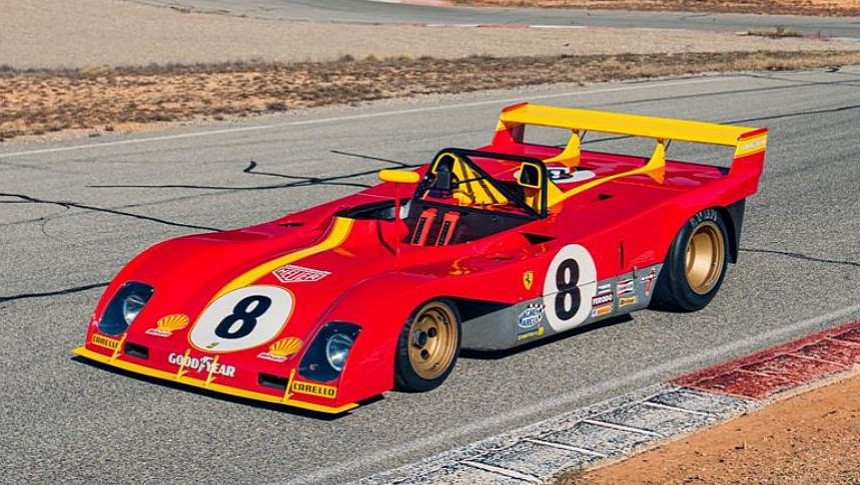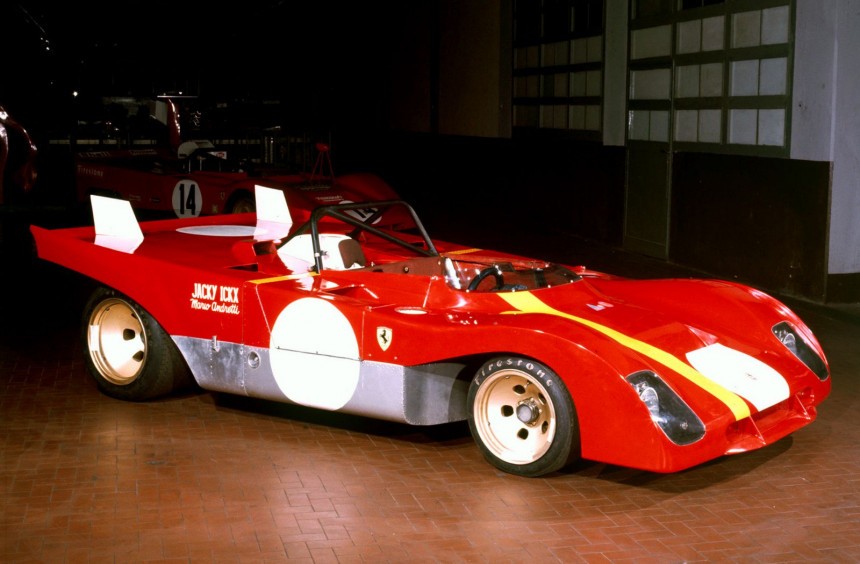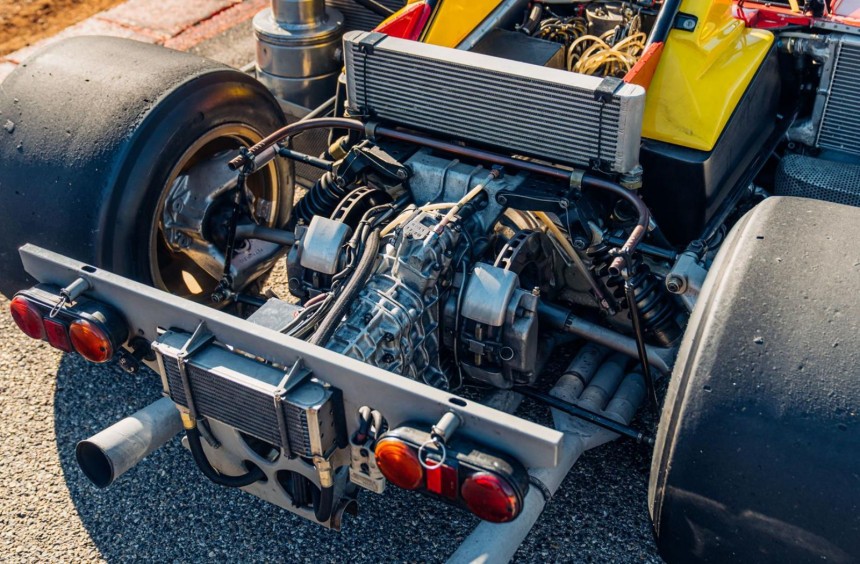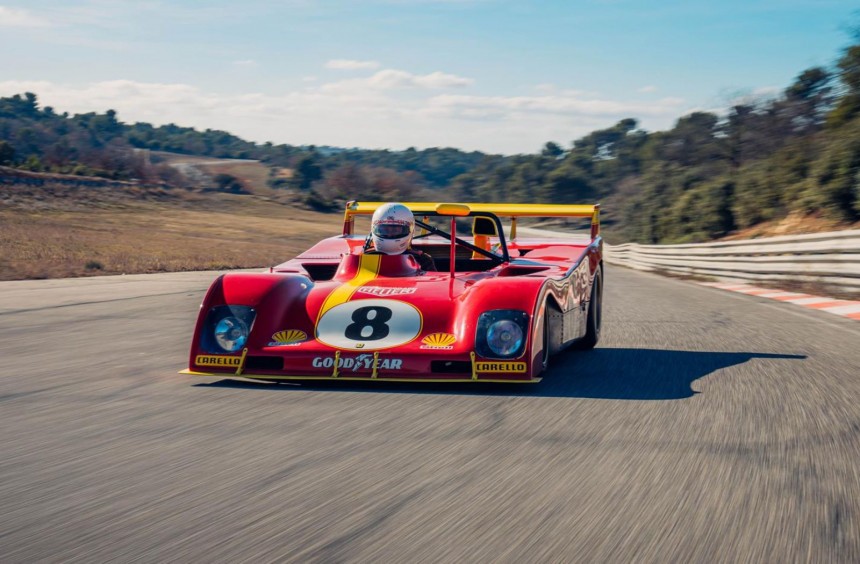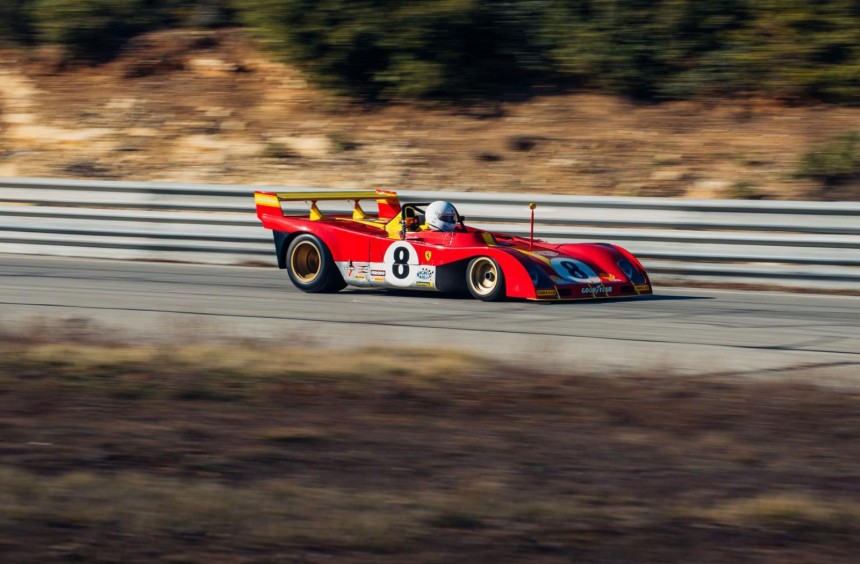Basically a 470-hp flat-twelve linked to a five-speed manual, fitted with wheels, and covered by a thin fiberglass shell, the 312PB was a raw machine from a dangerous yet spectacular era of motorsport.
From its inception as an Alfa Romeo racing team to the current area of high-tech hybrid machines, Scuderia Ferrari has become one of the most successful racing divisions in the history of motorsport.
Though it still holds the record for most Constructors' Championships with sixteen titles, the Scuderia has been a shade of its former self in Formula 1.
However, this year marked its return to endurance racing with the gorgeous 499P, and much to everyone's surprise, it managed to win the famous 24 Hours of Le Mans after last doing so 58 years ago.
If you're a motorsport fan, it's hard not to love the current endurance prototypes with their highly-potent hybrid powertrains and aggressively-styled bodies. Nevertheless, it's even harder not to love their brutal 1970s predecessors, which younger fans have unfortunately forgotten.
Those machines are ugly, technologically inferior brutes for some younger folks, but that's precisely why they were, and still are, exceptional. No ABS or stability control, just a frail chassis, a powerful engine, and a manual transmission. Yet with brave and highly-skilled drivers behind the wheel, they still went at it on far more dangerous tracks at speeds comparable to what their modern counterparts can achieve.
Much like today, during the early-1970s, Ferrari was getting its behind whooped in Formula 1 by Tyrell or Lotus and their Ford-Cosworth DFV V8s.
Things weren't looking brighter for the Italians in the World Sportscar Championship (WSC) either, with Porsche winning most races (including Le Mans) in 1970.
On the Formula 1 front, Enzo decided to continue upgrading the 312B chassis, but for his team's 1971 WSC campaign, he instructed the team to build a new car which would go down as the last, great analog Pracing Horse that would compete in endurance racing.
Though it was officially called 312P, the new car became known as the 312PB, like a previous prototype.
Back then, Formula 1 and sports car prototypes were similar, sharing many common parts.
At Ferrari, the team in charge of developing the F1 challenger was also tasked to build the new prototype. Leading this team was the great Mauro Forghieri, who devised a new spaceframe chassis with a central aluminum monocoque and an independent suspension system.
For the mid-mounted engine, Forghieri chose the Typo 001 Formula 1 flat-twelve linked to a Ferrari-built five-speed manual. Designed by him a year earlier for the 312B F1 car, the 3.0-liter had a bore and stroke of 78.5 mm x 51.5 mm and a compression ratio of 11.8:1. This enabled it to rev up to 12,600 rpm and make 470 hp.
To adjust it for endurance racing, the output was initially limited to 440 hp, but by 1973, the car's last year of service, it went back up to 470 hp.
Since 1971 was the last year for Group 6 and its 5.0-liter machine, the 312PB was designed to abide by the new 1972 Group 5 regulations, so it started the season at a disadvantage against the 5.0-liter Porsche's 917K.
Co-driven by Italians Ignazio Giunti and Arturo Merzario, the new car had a nightmare debut at the 1000 km of Buenos Aires race. After a promising start that saw him take the lead, Giunti collided with the limping Matra 660 of Jean-Pierre Beltoise. The impact triggered a huge fire, and the driver lost his life as race marshals could not pull him out of the car in time.
During the season's remaining races, the 312PB was developed further but failed to win a single one. Porsche cruised to another WSC title, followed by Alfa Romeo, whereas Ferrari finished the season in third place.
With new regulations in place and Porsche protesting the changes by withdrawing its factory team, 1972 became the Scuderia's redeem season.
The 312PB was thoroughly improved, becoming more powerful and receiving a new, low-slung body that improved aerodynamics. Confided that these improvements would bring them the championship, the team lined up five factory cars.
Driven by an all-star lineup of drives that included F1 aces Jacky Ickx, Clay Regazzoni, Carlos Reutemann, or Mario Andretti, as well as future WRC champ Sandro Munari, the 312PB won all of the races it entered.
It was a near-perfect season for Ferrari, who lifted the WSC trophy again after five years of disappointments. I say near-perfect because the team didn't add Le Mans to their wins list since they chose not to compete in 1972.
The reason behind this decision was the F1 Typo 001 engine's inability to sustain the rigors of a 24-hour race. But that changed with the updated 1973 unit.
Ferrari brought three cars to Le Mans, where it faced strong opposition from 1972 winners Matra. One of these cars, co-driven by Arturo Merzario and Carlos Pace, was tuned for speed rather than endurance.
The strategy was to use this car to push the Matras past their limits for the first part of the race, even if that meant blowing up the engine. The team theorized that with the French cars overheating, they would either be forced to retire or slow down, allowing the other Ferraris to take the lead.
The strategy worked for the better part of the race, but only to some extent. While the 312PBs controlled the race, the Matras were hot on their heels. With only 90 minutes to go, the leading 312PB of Jacky Ickx
and Brian Redman had to retire, while the Matra MS670B Henri Pescarolo and Gérard Larrousse crossed the finish line first. Ferrari and their brilliant 312PB had to settle for second place, earned, somewhat surprisingly, by the "bait" car of Merzario and Pace.
Matra also ended up winning the WSC that season with Ferrari finishing second and announcing its retirement from endurance racing. Until the 499P's victory, the 312PB was the last Scuderia Ferrari car to compete in the WSC and race at Le Mans.
For more on this fantastic race car, we recommend watching the YouTube video below by Petrolicious.
Though it still holds the record for most Constructors' Championships with sixteen titles, the Scuderia has been a shade of its former self in Formula 1.
However, this year marked its return to endurance racing with the gorgeous 499P, and much to everyone's surprise, it managed to win the famous 24 Hours of Le Mans after last doing so 58 years ago.
If you're a motorsport fan, it's hard not to love the current endurance prototypes with their highly-potent hybrid powertrains and aggressively-styled bodies. Nevertheless, it's even harder not to love their brutal 1970s predecessors, which younger fans have unfortunately forgotten.
Those machines are ugly, technologically inferior brutes for some younger folks, but that's precisely why they were, and still are, exceptional. No ABS or stability control, just a frail chassis, a powerful engine, and a manual transmission. Yet with brave and highly-skilled drivers behind the wheel, they still went at it on far more dangerous tracks at speeds comparable to what their modern counterparts can achieve.
Scuderia Ferrari's endurance racing last brute
Things weren't looking brighter for the Italians in the World Sportscar Championship (WSC) either, with Porsche winning most races (including Le Mans) in 1970.
On the Formula 1 front, Enzo decided to continue upgrading the 312B chassis, but for his team's 1971 WSC campaign, he instructed the team to build a new car which would go down as the last, great analog Pracing Horse that would compete in endurance racing.
Though it was officially called 312P, the new car became known as the 312PB, like a previous prototype.
Powered by a Formula 1 engine
At Ferrari, the team in charge of developing the F1 challenger was also tasked to build the new prototype. Leading this team was the great Mauro Forghieri, who devised a new spaceframe chassis with a central aluminum monocoque and an independent suspension system.
For the mid-mounted engine, Forghieri chose the Typo 001 Formula 1 flat-twelve linked to a Ferrari-built five-speed manual. Designed by him a year earlier for the 312B F1 car, the 3.0-liter had a bore and stroke of 78.5 mm x 51.5 mm and a compression ratio of 11.8:1. This enabled it to rev up to 12,600 rpm and make 470 hp.
To adjust it for endurance racing, the output was initially limited to 440 hp, but by 1973, the car's last year of service, it went back up to 470 hp.
Another loss to Porsche, followed by a near-perfect season
Co-driven by Italians Ignazio Giunti and Arturo Merzario, the new car had a nightmare debut at the 1000 km of Buenos Aires race. After a promising start that saw him take the lead, Giunti collided with the limping Matra 660 of Jean-Pierre Beltoise. The impact triggered a huge fire, and the driver lost his life as race marshals could not pull him out of the car in time.
During the season's remaining races, the 312PB was developed further but failed to win a single one. Porsche cruised to another WSC title, followed by Alfa Romeo, whereas Ferrari finished the season in third place.
With new regulations in place and Porsche protesting the changes by withdrawing its factory team, 1972 became the Scuderia's redeem season.
The 312PB was thoroughly improved, becoming more powerful and receiving a new, low-slung body that improved aerodynamics. Confided that these improvements would bring them the championship, the team lined up five factory cars.
Driven by an all-star lineup of drives that included F1 aces Jacky Ickx, Clay Regazzoni, Carlos Reutemann, or Mario Andretti, as well as future WRC champ Sandro Munari, the 312PB won all of the races it entered.
Failing to win at Le Mans
The reason behind this decision was the F1 Typo 001 engine's inability to sustain the rigors of a 24-hour race. But that changed with the updated 1973 unit.
Ferrari brought three cars to Le Mans, where it faced strong opposition from 1972 winners Matra. One of these cars, co-driven by Arturo Merzario and Carlos Pace, was tuned for speed rather than endurance.
The strategy was to use this car to push the Matras past their limits for the first part of the race, even if that meant blowing up the engine. The team theorized that with the French cars overheating, they would either be forced to retire or slow down, allowing the other Ferraris to take the lead.
The strategy worked for the better part of the race, but only to some extent. While the 312PBs controlled the race, the Matras were hot on their heels. With only 90 minutes to go, the leading 312PB of Jacky Ickx
and Brian Redman had to retire, while the Matra MS670B Henri Pescarolo and Gérard Larrousse crossed the finish line first. Ferrari and their brilliant 312PB had to settle for second place, earned, somewhat surprisingly, by the "bait" car of Merzario and Pace.
Matra also ended up winning the WSC that season with Ferrari finishing second and announcing its retirement from endurance racing. Until the 499P's victory, the 312PB was the last Scuderia Ferrari car to compete in the WSC and race at Le Mans.
For more on this fantastic race car, we recommend watching the YouTube video below by Petrolicious.
